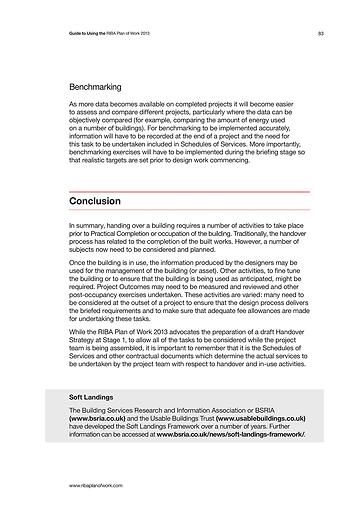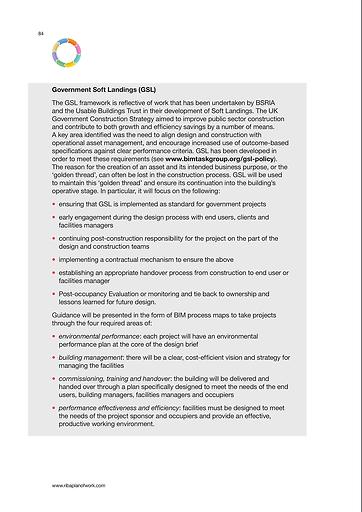Guide to Using the RIBA Plan of Work 2013 - Other - Page 89

82
the ‘drawn’ information to the completed building is just the beginning of new
processes that will harness and utilise the initial design for long-term maintenance
and operational objectives.
‘As-constructed’ Information
Requests for design team members to produce ‘as-built’ drawings at the end of
a project can lead to protracted discussions because these designers do not
necessarily have detailed and specific knowledge of what was actually constructed
in order to verify such a status. However, if the client is to utilise information after
Practical Completion, new ways of verifying such information will be required.
‘As-constructed’ Information is the term used in the RIBA Plan of Work 2013.
Of greater interest is the information contained in the model. Clients, and in
particular the UK Government, are increasingly requesting that models be
delivered electronically at handover in formats suitable for integration into CAFM
(computer-aided facility management) systems. COBie is one such format and
the UK Government’s current preferred means for achieving this objective. These
formats are designed to ensure the incremental development of information in the
model as greater definition of the design occurs at each stage and as products
and components are finalised and their operational and maintenance information
defined. As CAFM systems become more commonly used, the requirement to
provide such information at handover will increase.
COBie
The Construction Operations Building information exchange (COBie) is a life cycle
information exchange format that describes the spaces and equipment within a
facility. BIM software is utilised to export COBie data during the design process
(Information Exchanges). At project handover the information can be imported
into any CAFM system used by the client, end user or facilities manager. When
kept updated, such a system ensures that the accuracy of the BIM information is
maintained.
Project Outcomes
The benefits of Project Outcomes have already been set out in Chapter 5. In
the context of Practical Completion it is important to remember that certain
Project Outcomes may be a contractual imperative and that others may require
measurement or analysis to allow a client to provide an informed brief on a future
project. The Handover Strategy should set out any requirements so that Schedules
of Services can be agreed accordingly and adequate allowances made in the
Project Budget if these services are not commissioned at the start of the project.
www.ribaplanofwork.com













